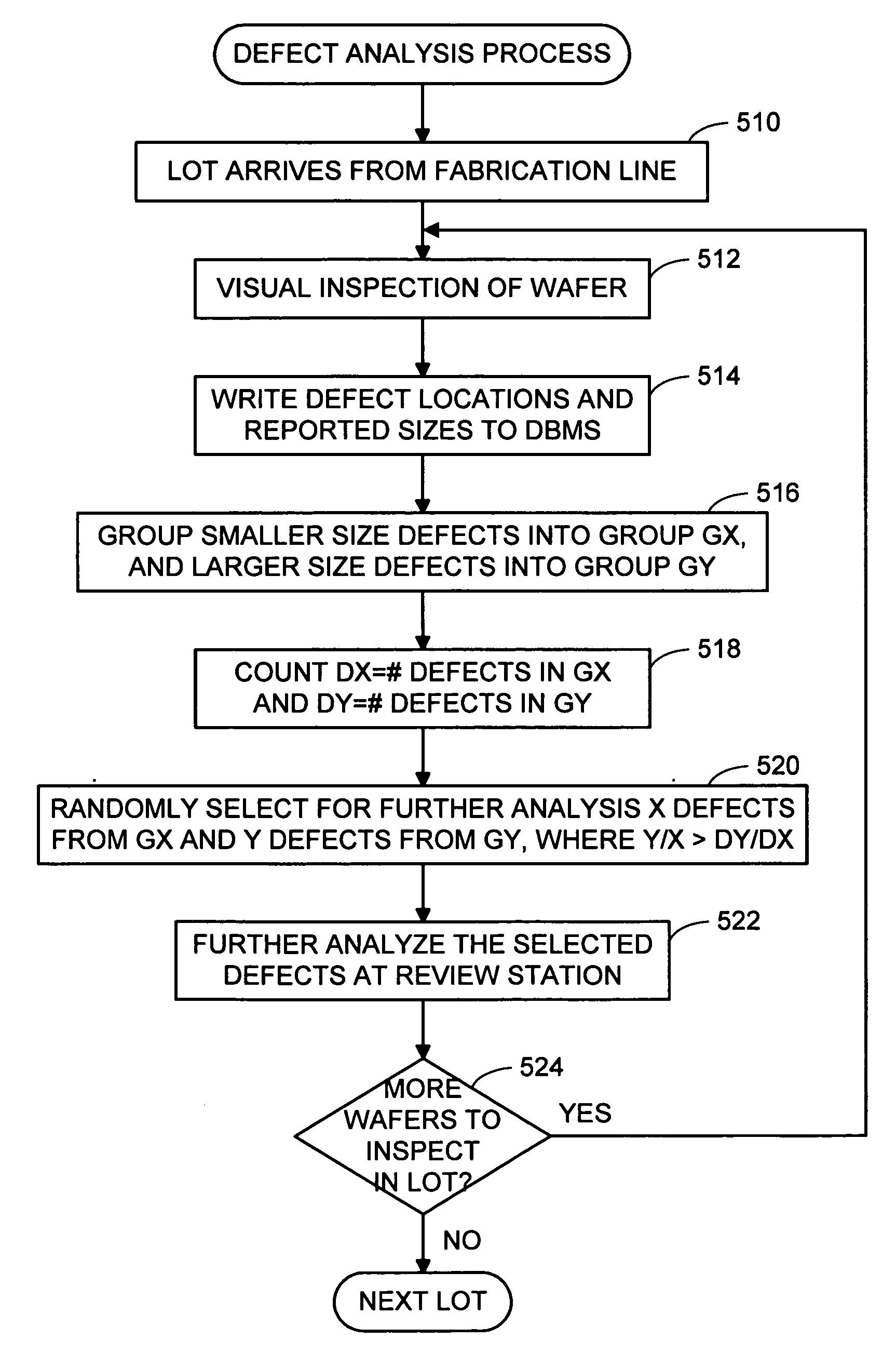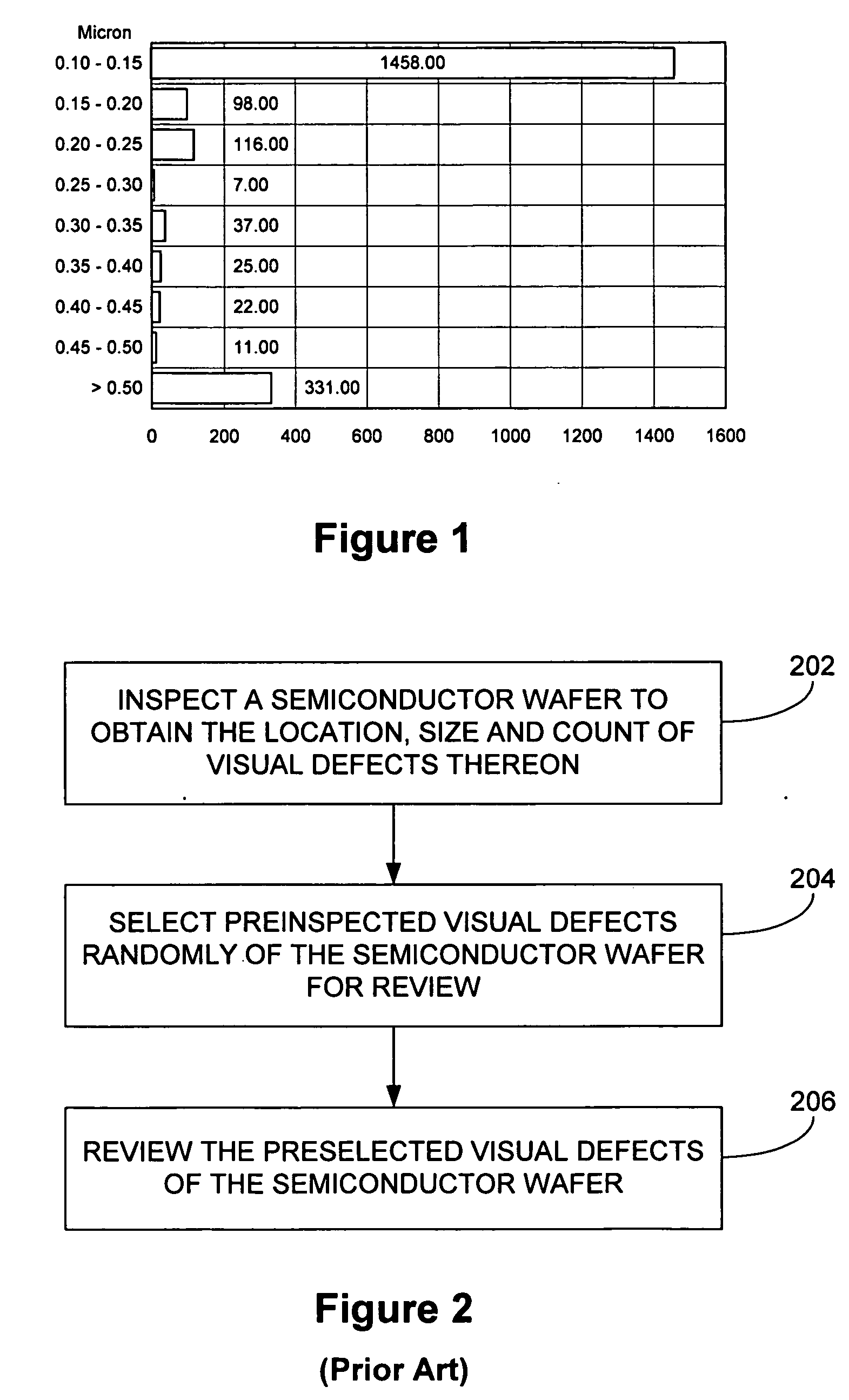Method and system for analyzing defects of an integrated circuit wafer
a technology of integrated circuit and defect analysis, which is applied in the direction of individual semiconductor device testing, semiconductor/solid-state device testing/measurement, instruments, etc., can solve the problems of deteriorating the performance of the semiconductor device, severe damage to the semiconductor circuit, and loss of yield, so as to achieve high yield-killing defects and efficient analysis of visual defects
- Summary
- Abstract
- Description
- Claims
- Application Information
AI Technical Summary
Benefits of technology
Problems solved by technology
Method used
Image
Examples
Embodiment Construction
[0024] One purpose of the invention is to provide a method of efficiently analyzing visual defects of a semiconductor wafer in the manufacturing process. In an embodiment described herein, a wafer that has been subjected to (or will be subjected to) an integrated circuit manufacturing process, is first inspected by automated equipment to identify “preliminary” defects on the wafer. Typically the preliminary inspection is a machine-vision inspection, and is intended to detect all defects above a preset threshold, that are (or will be) located on integrated circuit dice. The preliminary inspection system reports at least a size and a location for each defect identified. The defects are then classified into at least two groups: a first group containing only defects having a reported size that is at least as small as a predetermined size typically specified by the operator, and a second group containing only defects having a reported size that is at least as large as the predetermined s...
PUM
 Login to View More
Login to View More Abstract
Description
Claims
Application Information
 Login to View More
Login to View More - R&D
- Intellectual Property
- Life Sciences
- Materials
- Tech Scout
- Unparalleled Data Quality
- Higher Quality Content
- 60% Fewer Hallucinations
Browse by: Latest US Patents, China's latest patents, Technical Efficacy Thesaurus, Application Domain, Technology Topic, Popular Technical Reports.
© 2025 PatSnap. All rights reserved.Legal|Privacy policy|Modern Slavery Act Transparency Statement|Sitemap|About US| Contact US: help@patsnap.com



